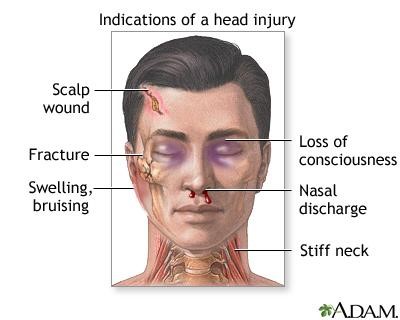When performing an assessment, the nurse observes for bilateral equality. After performing a neurological assessment, which of the following will the nurse document when assessment findings indicate that there is left facial droop?
Inability to perform within normal limits
Symmetrical findings
Asymmetrical findings
Bilateral strength present
The Correct Answer is C
Choice A Reason: This choice is incorrect. Inability to perform within normal limits is a vague and general term that does not describe the specific finding of left facial droop. The nurse should document the exact observation and compare it to the expected or normal range.
Choice B Reason: This choice is incorrect. Symmetrical findings mean that both sides of the body or face are equal or similar in appearance or function. Left facial droop indicates that one side of the face is lower or weaker than the other, which is not symmetrical.
Choice C Reason: This is the correct choice. Asymmetrical findings mean that both sides of the body or face are unequal or different in appearance or function. Left facial droop indicates that one side of the face is lower or weaker than the other, which is asymmetrical.
Choice D Reason: This choice is incorrect. Bilateral strength present means that both sides of the body or face have normal or adequate muscle power or force. Left facial droop indicates that one side of the face has reduced or impaired muscle power or force, which is not bilateral strength present.
Nursing Test Bank
Naxlex Comprehensive Predictor Exams
Related Questions
Correct Answer is A
Explanation
Choice A Reason: This is the correct choice because driving a motorcycle is a high-risk activity that can expose the client to head trauma, especially if they do not wear a helmet. Traumatic brain injury (TBI) is a condition where the brain is damaged by an external force, such as a collision, fall, or assault.
Choice B Reason: This is incorrect because having high blood pressure is not a direct risk factor for traumatic brain injury. High blood pressure can increase the risk of stroke, which is a condition where the brain is damaged by an internal cause, such as a blood clot or hemorrhage.
Choice C Reason: This is incorrect because smoking and having a family history of brain cancer are not risk factors for traumatic brain injury. Smoking and genetic factors can increase the risk of developing brain tumors, which are abnormal growths of cells in the brain.
Choice D Reason: This is incorrect because golfing and driving a golf cart are low-risk activities that do not pose a significant threat to the client's head. Golfing and driving a golf cart may cause minor injuries, such as sprains, strains, or bruises, but not traumatic brain injury.

Correct Answer is A
Explanation
Choice A Reason: This is correct because first degree burns are superficial burns that affect only the outer layer of the skin, called the epidermis. First degree burns cause redness, pain, and mild swelling, but no blisters or scarring. They usually heal within a week.
Choice B Reason: This is incorrect because second degree burns are partial thickness burns that affect both the epidermis and the underlying layer of the skin, called the dermis. Second degree burns cause blisters, severe pain, and possible infection. They may take several weeks to heal and may leave scars.
Choice C Reason: This is incorrect because third degree burns are full thickness burns that destroy all layers of the skin and may damage the underlying tissues, such as muscles, nerves, or bones. Third degree burns cause charred or white skin, numbness, and shock. They require skin grafting and may cause permanent disability or death.
Choice D Reason: This is incorrect because this burn can be classified according to the depth and extent of the skin damage. The classification of burns helps to determine the appropriate treatment and prognosis for the client.
Whether you are a student looking to ace your exams or a practicing nurse seeking to enhance your expertise , our nursing education contents will empower you with the confidence and competence to make a difference in the lives of patients and become a respected leader in the healthcare field.
Visit Naxlex, invest in your future and unlock endless possibilities with our unparalleled nursing education contents today
Report Wrong Answer on the Current Question
Do you disagree with the answer? If yes, what is your expected answer? Explain.
Kindly be descriptive with the issue you are facing.
